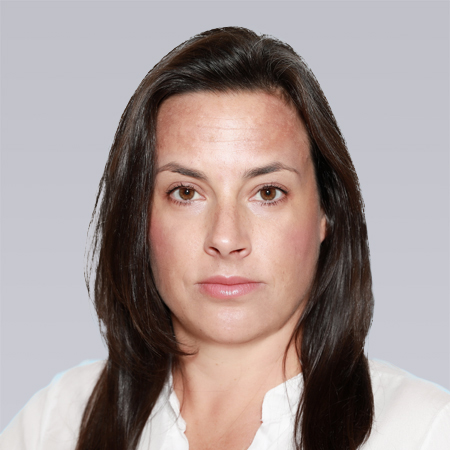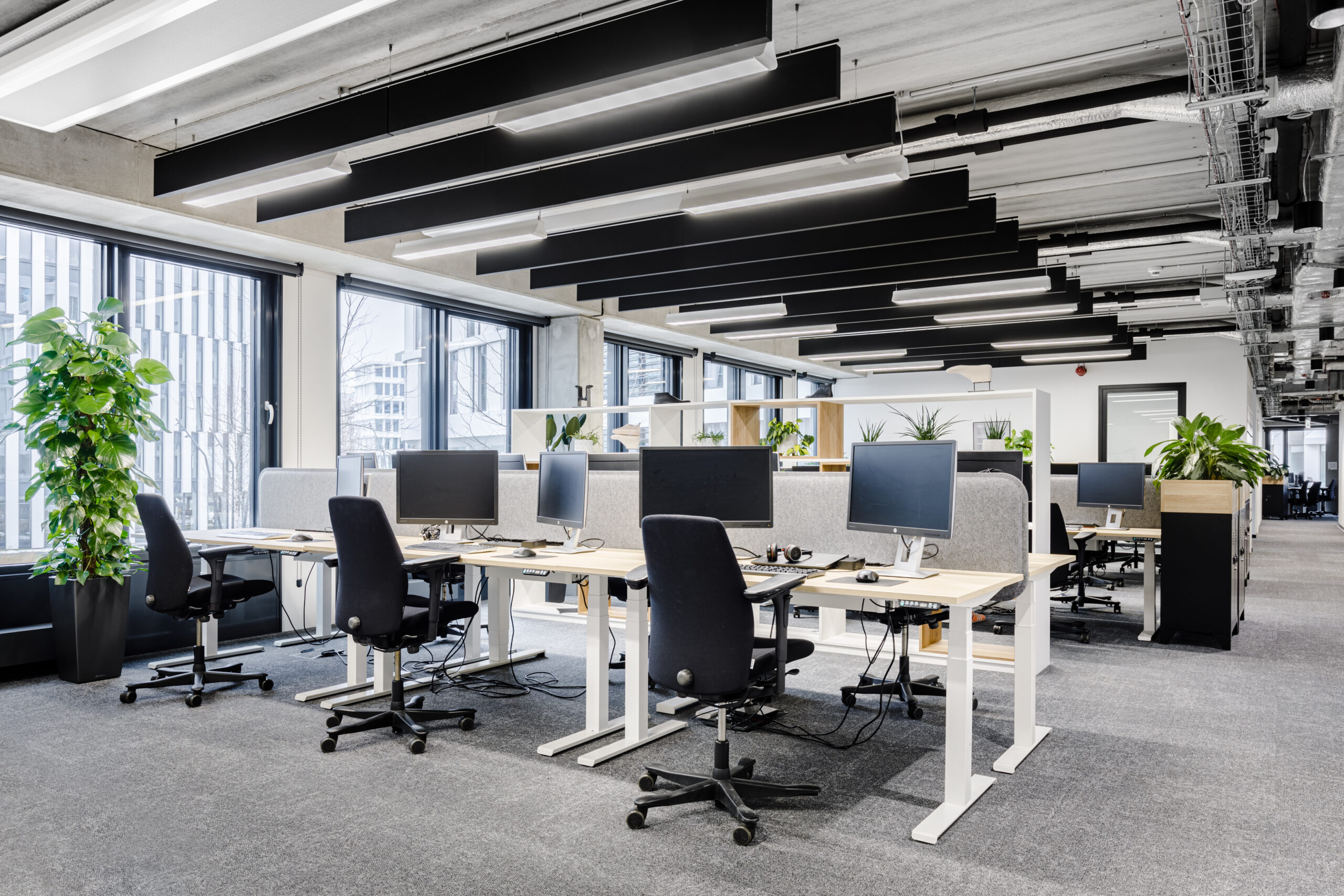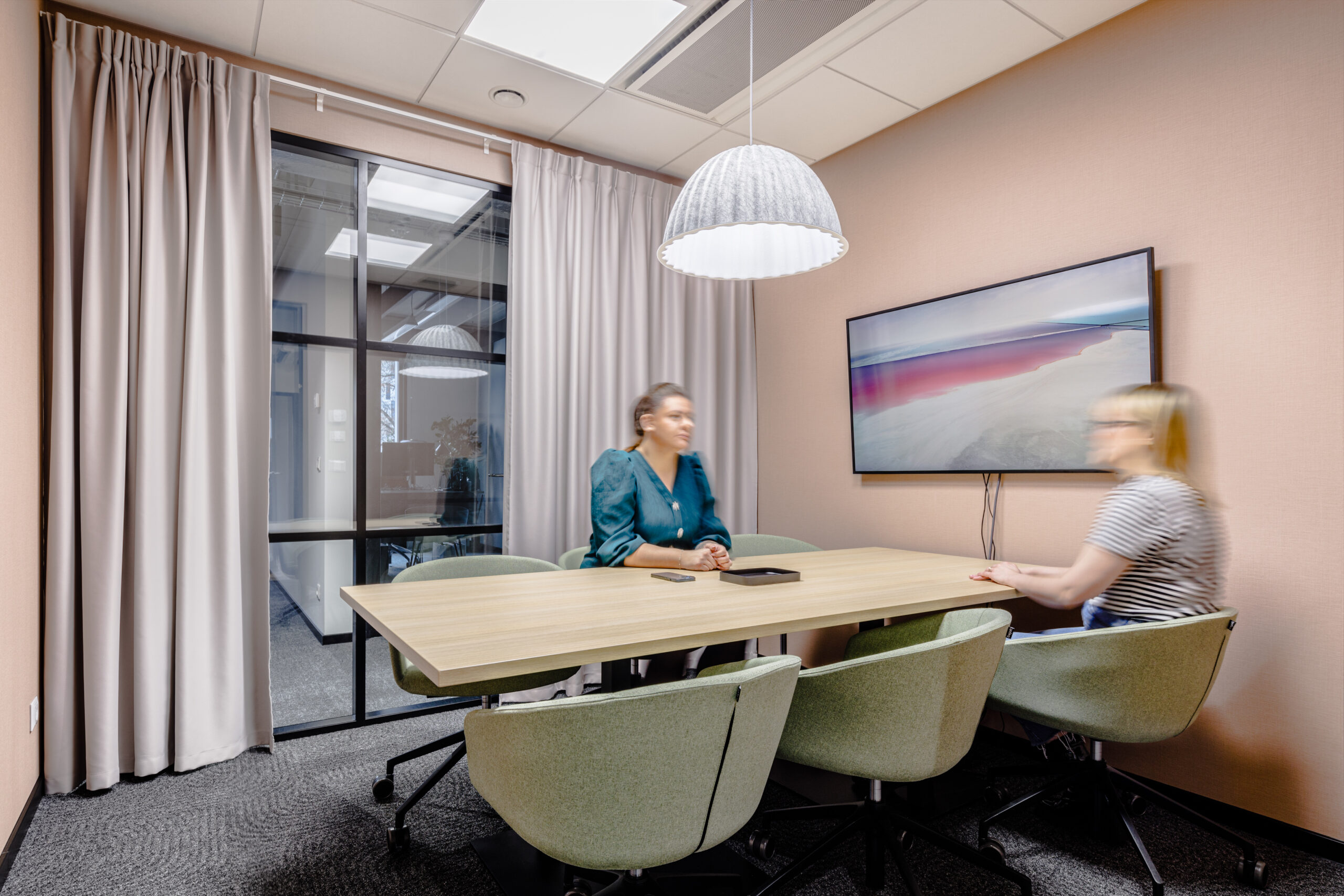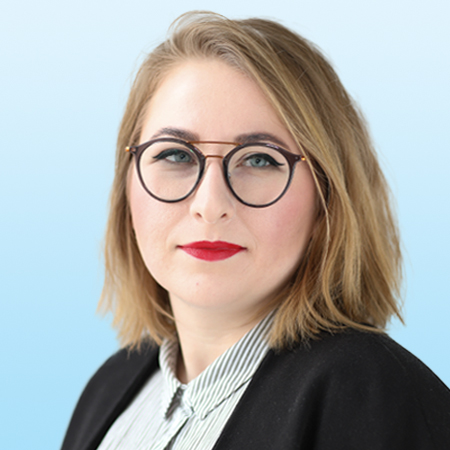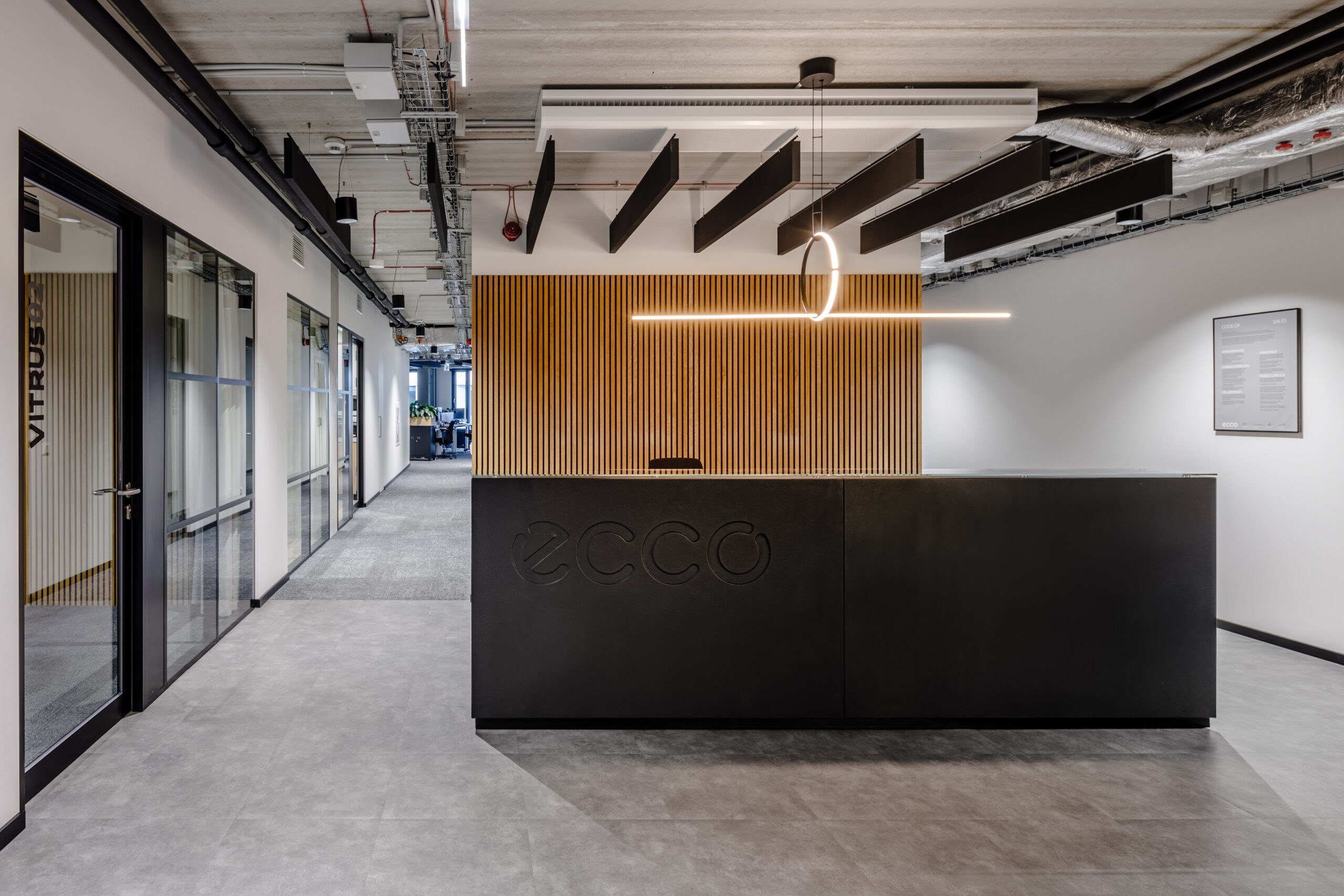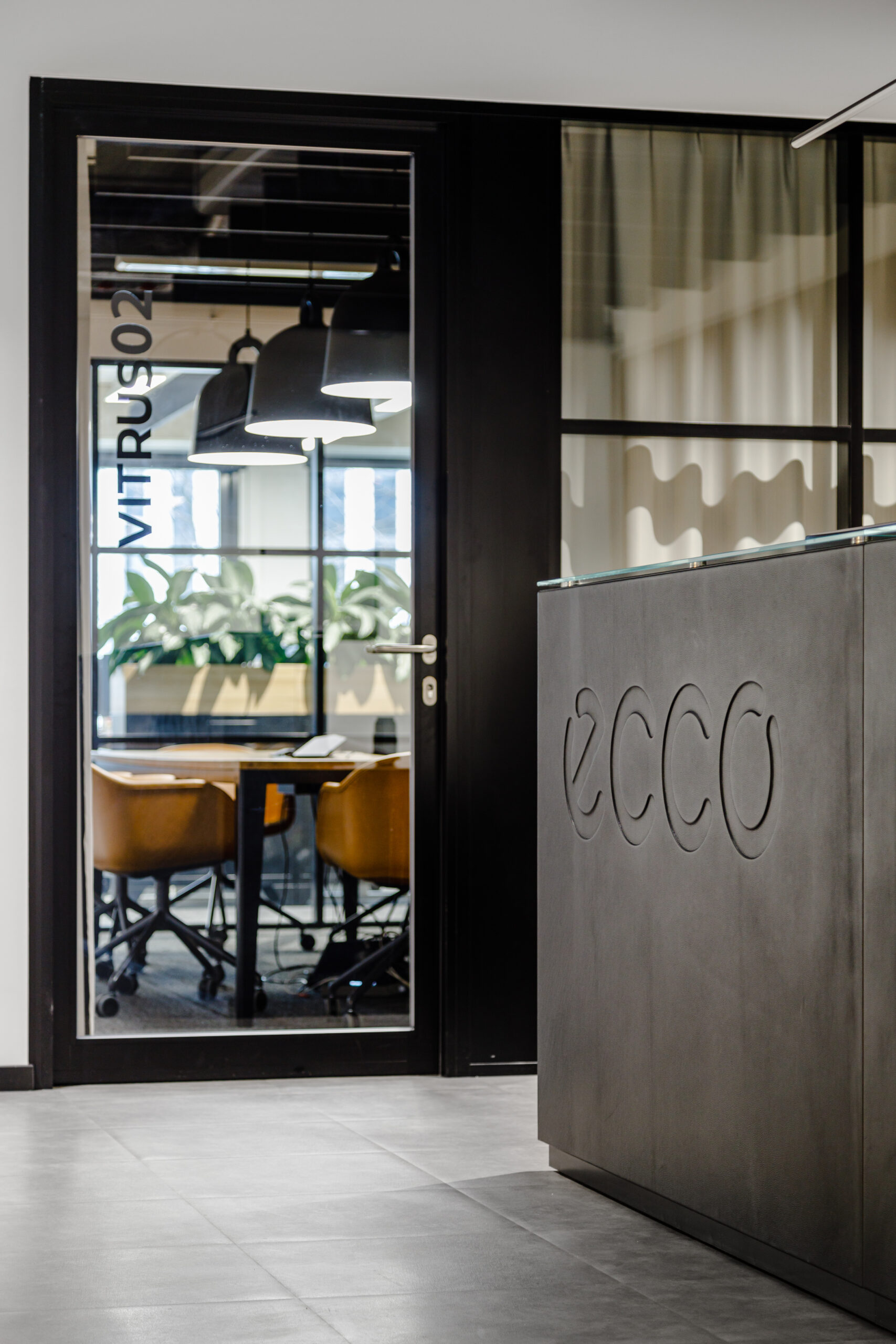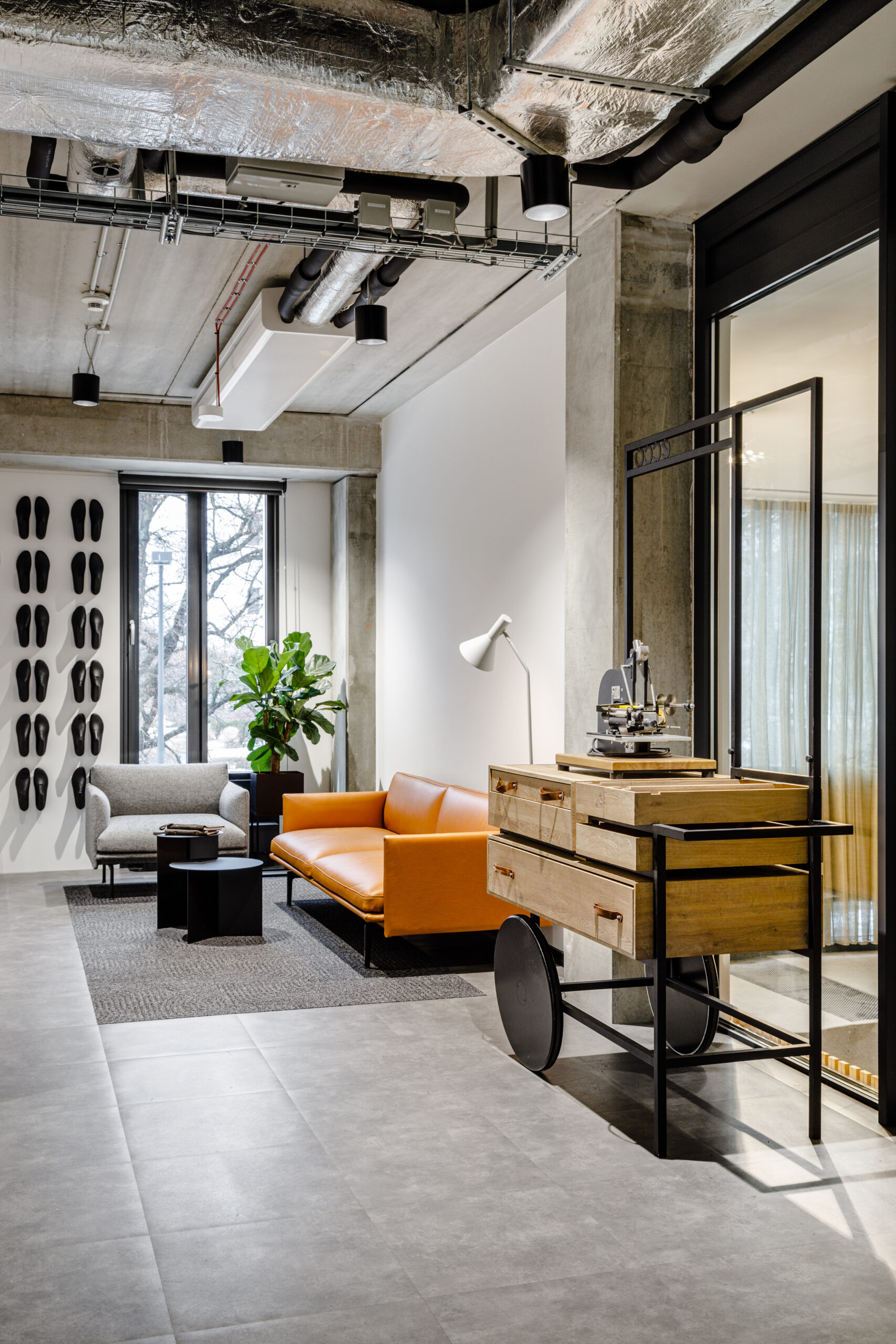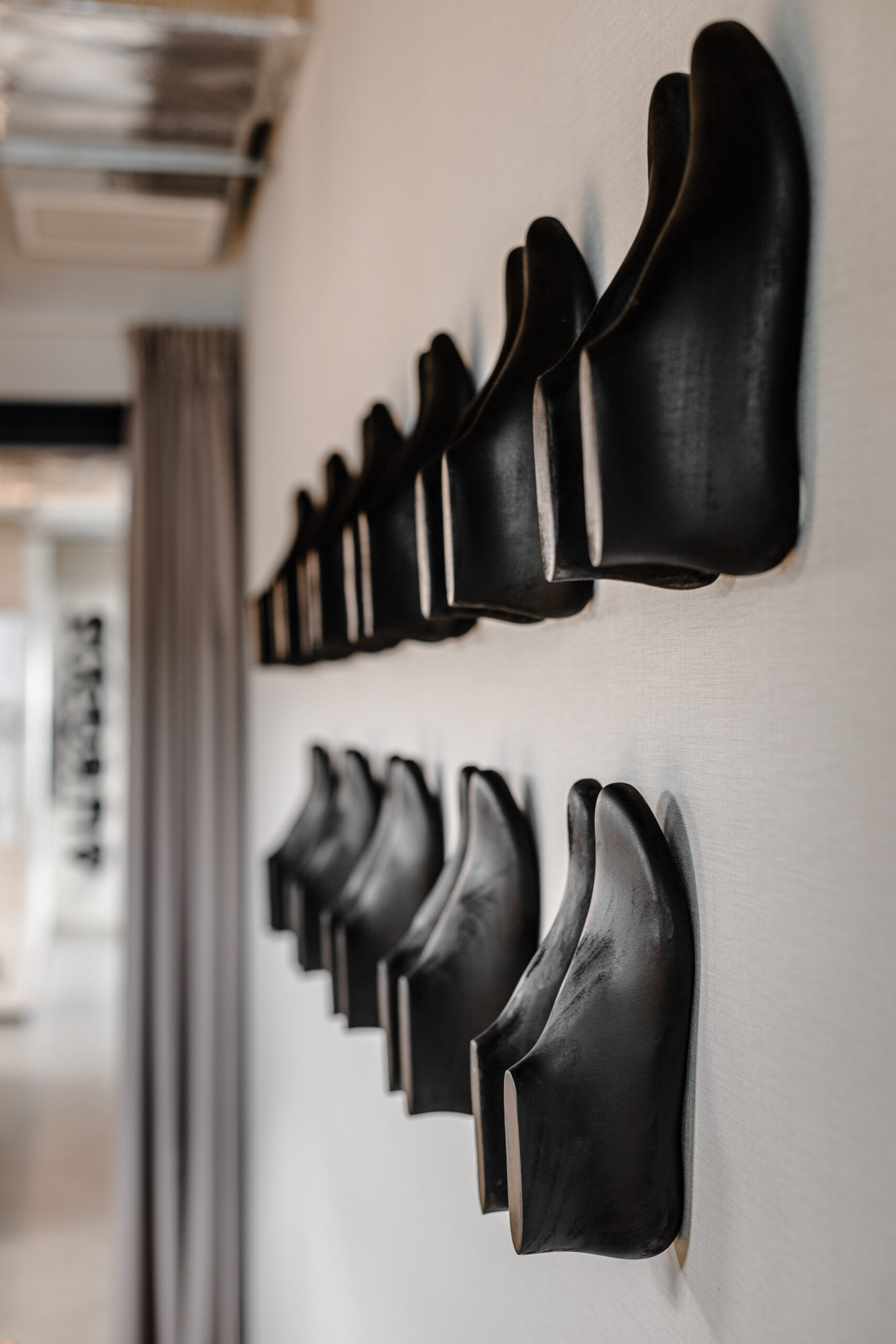Case study: Ecco | Scandinavian minimalism
Scandinavian design, high-quality natural materials and an arrangement that creates conditions for effective individual work, cooperation and communication. These are the key principles of the project for Ecco office realized by Colliers Define.
Colliers Define experts were responsible for the interior design, technical documentation and supervision of the implementation, and Colliers’ Tenant Representation team assisted the Client in the transaction process, including the negotiation of the lease agreement.
The beginning of the story
Ecco is a Danish footwear manufacturer. The company was founded in 1963 and has more than 3,000 stores worldwide. The dynamic growth of the business in Poland resulted in the decision to move to new headquarters, which would provide comfortable conditions for a larger number of employees. The new 800 sqm office was built in the Business Garden III building in Warsaw’s Włochy district.
Process
A key challenge in this project was to create a space tailored to the specific work styles that prevail in the company. The hybrid model that Ecco has adopted assumes the predominance of working from the office. This is dictated primarily by the need for direct cooperation between team members, who, while performing individual tasks, are constantly discussing among themselves. Therefore, team zones became the basis of the arrangement, where individual workstations are directly adjacent to ancillary spaces such as focus rooms and small meeting rooms.
A significant change for employees was the abandonment of offices and closed multi-user rooms in favor of a diverse open-plan arrangement. It allows for greater flexibility and adaptability of the space, which was one of the priorities for the rapidly growing company.
From ideas to shapes
The zoning of the office is dictated by the logic of information exchange and cooperation in the organization. The layout of the adjacencies reflects the nature of the teams’ work – those working in silence are located next to each other, similarly with those whose work style requires extensive information exchange. Close to the work zones, there are also offices and focus rooms that allow people to work in focus. Conference rooms are equipped with AV systems adapted to the hybrid work model. As a result, people performing their duties remotely can comfortably participate in meetings.
In addition to providing the conditions for effective work, an important objective of the project was to use the office as a means to build the company’s image. The interior design concept was created in close cooperation with the local team and those responsible for the global Ecco brand. They were the ones who suggested the use of natural leather, the adoption of a limited color palette and minimalist furniture and accessories.
In the entrance area, a custom-designed reception counter is a strong image accent. Made of the highest quality natural leather, in which Ecco’s logo is carefully embossed, it symbolizes the craftsmanship and luxury that characterize the brand.
In the interior, Scandinavian minimalism dominates, alluding to the history and traditions of Ecco. An important aspect of the design was the use of elements from the previous headquarters, allowing to emphasize Ecco’s commitment to sustainability. Natural materials, wood, minimalist furniture and artifacts related to the company’s operations create the mood and character of the space. The brand’s signature color palette, which is punctuated with crisp leather accents, weaves through the interior. The identity of the space is provided by subtle details inspired by the arrangements of Ecco offices around the world – shoemaker’s hooves, which are a simple but distinctive reference to the industry.
New reality
The new office is an efficient and welcoming space that, by fostering face-to-face collaboration, encourages employees to visit more often. It also serves as an employer branding tool to attract talent.


